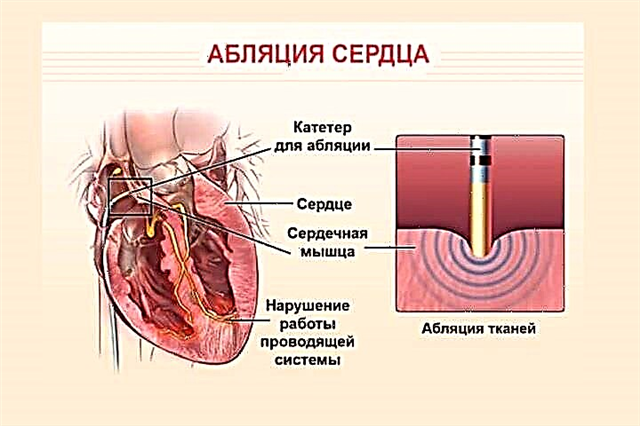If you do not pay attention to frequently occurring headaches for a long time, complex craniocerebral pathologies develop, from which it will no longer be possible to get rid of simple painkillers. One of them is intracranial hypertension. Therefore, everyone should know what it is, what are the symptoms of pathology in adults, and how to get rid of this kind of trouble. Late detection of the disease can lead to severe forms of the disease, and even fatal consequences.
Varieties of cerebrospinal fluid hypertension
Cerebral hypertension is a persistent disease caused by an increase in cerebrospinal fluid pressure. At the same time, a person has a stable venous pressure in the range of 160/140 mm Hg. pillar and above. All attempts to reduce the indicators end in failure, so people turn to the clinic, where professional doctors establish this diagnosis.
The brain is susceptible to external influences. In addition to the bones of the skull, there is a fluid inside the cranium - the cerebrospinal fluid, which also has its own pressure. In a healthy person, cerebrospinal fluid pressure is stable, so he does not feel pain or discomfort, however, with an increase in intracranial indicators, various symptoms arise that require immediate medical advice.
Intracranial hypertension syndrome is not an independent disease. It belongs to a number of pathological diseases, but it is believed that these deviations can be caused by individual neurological abnormalities. Intracranial hypertension is divided into several types, starting from the cause of the disease:
- Acute hypertension. It occurs as a result of cerebral hemorrhages, traumatic brain injuries, tumors and cerebral cysts. If pressure occurs in this form, a person can die within a few weeks.
- Moderate. Appears in patients with vegetative-vascular dystonia, and regularly get into stressful situations. Also, this kind of disease is often found in meteorological people who react to weather changes.
- Venous cerebrospinal fluid intracranial hypertension is the result of blood outflow from the cranial cavity. It occurs when the cervical veins are squeezed by osteochondrosis, tumors of the chest, abdomen, as well as thrombosis, which closes the venous lumen.
- Benign intracranial hypertension can be triggered by overweight, malfunctioning of the thyroid gland, menstrual irregularities and hormonal abnormalities (in women aged 20 to 40). In this case, a person can be considered relatively healthy, because intracranial hypertension (in this form) is not classified as a pathological disease. It is also called idiopathic hypertension.
The peculiarity of the course of intracranial hypertension in a benign form is that a person's consciousness functions well. Sometimes patients do not even need medical therapy, hypertension can go away by itself, after using elementary folk remedies.
Reasons for the appearance
Intracranial hypertension has no specific cause. However, it is associated with the following problems:
- Brain changes: hematomas or tumors, which over time begin to increase in size and squeeze the tissues located around them, provoking intracranial pressure.
- Any trauma to the skull or brain (even 20 years ago). They are able, years later, to provoke an increase in cerebrospinal fluid pressure.
- Pathological processes leading to cerebral edema. A vivid example of these deviations: encephalitis, hydrocephalus, meningitis.
- Pulmonary diseases of a chronic nature, heart failure.
- Incorrect blood circulation, due to a malfunction of the vascular capacity of the brain.
Excessive body mass can also be a source of intracranial hypertension. In this case, you can contact a nutritionist who will prescribe a therapy that promotes rational weight loss. As a result, the cerebrospinal fluid pressure will return to normal.
Benign intracranial hypertension can appear as a result of excess / insufficient amount of vitamins inside the body, as well as when carrying a child.
To determine the origin of hypertension, the doctor considers the above factors that provoke the compression of the arteries of the head. Effective therapy is prescribed after determining the source of the disease.
Symptoms
With mild deviations, mild headaches, weakness occur, but when complex pathological processes appear, a number of frightening signs of the disease appear. In this case, it is required to take a responsible attitude to the manifestation of the disease, because it can provoke terrible consequences, up to and including death.
Benign hypertension is the mildest variant of the course of the disease. In this case, there may be an increase in headaches when walking. Of course, there are other signs, but in rare cases. People suffering from this kind of disease will need to take care of themselves so as not to attract complications. In other cases, intracranial hypertension is a sign of the progression of diseases caused by pathological or traumatic brain diseases.
The main symptoms of the disease are:
- Regular pain in the head.
- Incorrect functioning of consciousness, manifested by stunnedness or coma, depending on the severity of the disease.
- Regurgitation, nausea, not associated with food intake. These symptoms appear in the morning.
- Poor movement of the eyeballs, up to loss of vision.
There are also indirect signs of intracranial hypertension. Thanks to them, the diagnosis of this ailment is simplified, but their presence in a person does not give a 100% guarantee that CSF hypertension really is. This symptomatology can be used in combination with the above-described signs to suggest the presence of intracranial hypertension.
Indirect signs of intracranial hypertension:
- Insomnia or drowsiness.
- Excessive activity, lack of attention.
- There may be a decrease in student performance in educational institutions.
- Pale skin.
- Chin trembling.
- Regular nasal bleeding.
If you have several signs of the disease from the list of the main symptoms, as well as indirect signs, you need to immediately consult a specialist and start treating intracranial venous hypertension. Otherwise, the lack of therapy will lead to irreversible consequences.
Having come to an appointment with a specialist, he will listen to complaints, make an anamnesis, determine the cause of intracranial pressure, as a result of which he will begin instrumental methods of studying the disease. This allows you to clarify the complexity of the disease, to determine the most effective therapeutic technique.
To confirm the diagnosis, doctors must conduct all possible studies to identify the degree of complexity of the disease. To do this, apply:
- MRI of the brain.
- Examination of the bone tissue of the skull using X-ray equipment.
- Lumbar puncture.
- Examination of the eyes (the smallest vessels are located in the eyes, therefore this diagnosis is indispensable in establishing a diagnosis).
- Ultrasound of the brain.
Head examinations are carried out as follows:
Radiography allows you to identify radiological signs of the disease, such as: the transparency of the walls and the modification of the Turkish saddle, in the form of shortening, thinning, unfolding of the saddle back. With meningiomas, hyperostoses appear, with eosinophilic granulomas, metastases, osteosarcomas, osteolysis and thinning of bone tissue occur.
Craniography is the most common method for examining the cranial space, which allows you to find out all the information about abnormal development, structural, traumatic changes in the shape of the skull.
Using this technique, specialists supplement the indirect signs of intracranial hypertension - suture divergence, osteoporosis, digital impressions, vascular pattern emphasis, and enlarged vascular grooves. These X-ray indicators are of great importance, especially when, with several studies, the level of increased cerebrospinal fluid pressure gradually increases.
In addition, doctors establish during the diagnosis that the eye veins have acquired a tortuous and enlarged shape, the cerebral fluid cavities have increased and there have been deviations associated with the outflow of venous blood from the skull.
Treatment
If the diagnosis has confirmed the presence of intracranial pressure, then urgent treatment will be required, which is selected individually for each patient. This is due to the severity of cerebrospinal fluid hypertension, as well as emerging complications.
Surgical intervention is used in critical cases when drug therapy is ineffective. In this case, a repeated lumbar puncture is performed, the implantation of special tubes inside the skull, allowing to remove excess cerebral fluid and stabilize intracranial pressure.
Conservative treatment is required for patients who are at a mild stage of the disease. Then the specialist prescribes "Glycerol" and diuretics. To put in order the cerebrospinal fluid, the patient will need to use "Acetolosamide", "Diamox". Also (if necessary) a lumbar puncture is performed weekly after the restoration of intracranial pressure, and during treatment it is performed daily. At the end of this course, "Mexidol" is prescribed for prophylactic purposes.
For the implementation of physiotherapeutic treatment procedures, an effect on the vascular system of the brain and neck is required. In this case, the following will help:
- Cervical manual therapy.

- Point massage and acupuncture.
- Massage of the cervical spine.
Also, a special diet, abundant drinking and individual gymnastics are additionally prescribed, allowing you to get rid of the disease as soon as possible.
Ethnoscience
Today, it is much easier for people to learn about their health status and get rid of symptoms that cause discomfort and pain, but earlier patients used various herbal decoctions, infusions that perform similar functions. In this case, sedative and diuretic plants will be useful, on the basis of which folk medicines are prepared:
Lavender tincture. For cooking, you need 1 tbsp. l. lavender flowers, which must be put in a thermos and filled with half a liter of boiling water. After 40-60 minutes, you need to drain the tincture, completely ready for use. The medicine should be taken for a month before meals, three times a day. It will also be helpful to use lavender oil to massage the temporal region of the head with it.
Mulberry decoction. Initially, you will need to chop the foliage and mulberry branches. Then boil 15 grams of the plant in a liter of water for 20 minutes, let stand (60 minutes at room temperature). The ready-made broth is consumed three times a day before meals, 0.5 cups, strictly 30 minutes before meals. The course of treatment is no more than 3 months.
Clover tincture... Flowers of meadow clover must be tamped into a dark jar (0.5 l.) And filled with alcohol. Leave to infuse in a dark place for 14 days, but you should regularly take out the healing tincture and shake it at least once a day. After 2 weeks, you can start using it 0.5 hours three times a day. The treatment course is 30 days.
Despite the effectiveness of these funds, one should not replace drug treatment with them, because specially developed pharmacological drugs will help the patient much faster, reducing the possibility of complications. It is also recommended to consult with your doctor before using folk remedies so as not to overload the body with drugs.
Folk recipes are recommended for the treatment of a mild stage of intracranial pressure, as well as for prophylactic purposes. Before using, you should make sure that you do not have an allergic reaction to these plants.
If intracranial hypertension is detected in time, then you can stop its progression and prevent complications. Examining the patient, the doctor will discover the cause of its appearance, which will help get rid of the pathological processes that cause increased cerebrospinal fluid pressure, therefore it is recommended to take a responsible attitude to your health in order to prevent blindness, coma or death.




